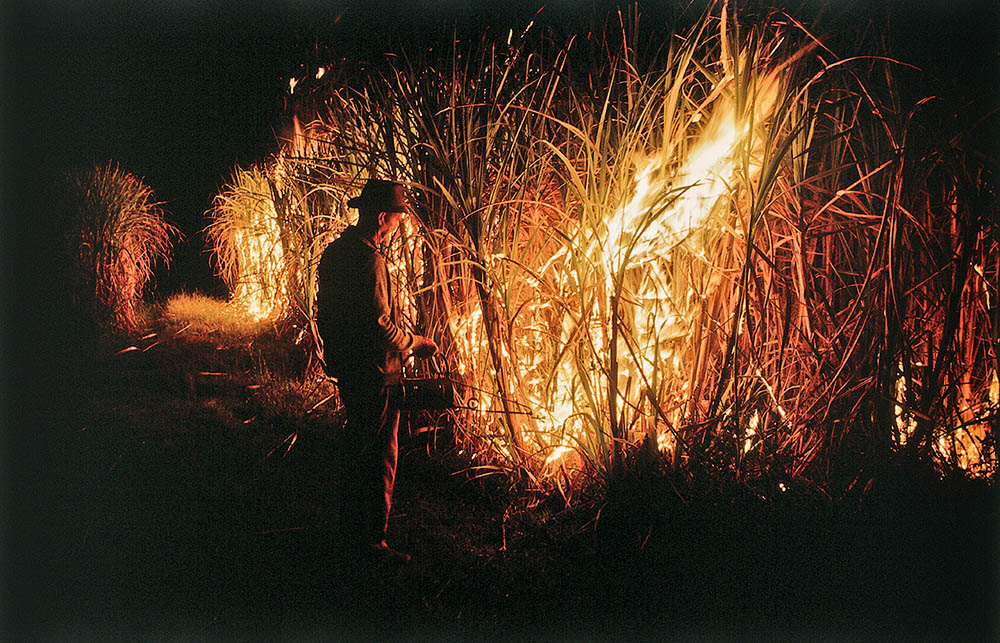- GVP $85 million est. Up 15% year-on-year.
- Global sugar prices up 32% year on year to average A$579 per tonne in 2021-22.
- Repeated flooding has impacted production in both 2021 and the current 2022 season.
Production
Sugar cane production 253
- Area harvested for milling (ha)
- Sugarcane yield (t/ha)
Price
Global raw sugar production/consumption balance and sugar price 261 262
- Global Net Production ('000 tonnes)
- Sugar futures price (USD/lb)
Trade
Macroeconomic Conditions
Global consumption of sugar has risen in 2021-22 as economies recovered from the COVID-19 pandemic and from growth in markets including China, India and Indonesia. In 2021-22 India exported record quantities of sugar to meet globally lower production and strong prices, although increased domestic demand in India is expected to contribute to less available sugar for export in the following year. 262
A lower Australian dollar, which has decreased 7% against the US dollar over the 12 months to May 2022, also supports Australian sugar prices and the gross value of Australian sugar exports. 234 252
As is the case for other agricultural industries, cane growers are managing high costs for critical inputs such as fertiliser, agrochemicals and fuel which will be expected to impact margins.

Outlook
In the longer term, while population growth supports global consumption of sugar, the outlook for growth in per capita consumption of sugar is contrasted between developed and developing countries. For OECD countries including Australia, which already have a high consumption per capita, consumption is expected to decrease over the decade. In contrast developing countries in Asia are anticipated to increase consumption per capita with increasing incomes and urbanisation supporting demand for confectionery products and soft drinks. 262 182
Sustained stronger sugar prices will ultimately result in an increased supply response in the medium term by major sugar producers, seasonal conditions permitting. In addition, moderating energy and ethanol prices would likely see some diversion of sugar cane to sugar production, away from ethanol, increasing supply further but this will also be influenced by countries’ energy mandates. 252
Stronger Primary Industries Strategy
Bushfire Rural Recovery Support Service
DPI’s Bushfire Rural Recovery Support Service (RRSS) was established in October 2019 in response to the widespread Black Summer Bushfires that caused multiple natural disasters to be declared and over 6 months, impacted 50 Local Government Areas (LGAs) across NSW.
Strategic Outcome


The Rural Recovery Support Service provided free, voluntary and accessible support to anyone who had experienced losses and trauma as a result of the fires. Recovery officers, located in four teams across NSW, helped link impacted individuals to government and non-government support services for financial assistance, housing assistance and family services as well as technical advice and information on planning, development and infrastructure replacement. They were also Involved in hundreds of industry and community events designed to support community cohesion and resilience and build preparedness for future disasters.
The Rural Recovery Support Service assisted the recovery efforts of over 4,300 primary producers and rural landholders across 53 NSW Local Government Areas, helping them access more than $45.46m in financial assistance through Govt assistance programs, charities and in-kind support. The team worked with 77 different stakeholder types ranging from Local Government to industry groups, to service providers and charities to ensure the clients had access to the most appropriate information and support to meet their individual needs.
Recovery barriers were identified and where possible, addressed using local solutions. A great example was identifying the challenges associated with repairing the northern wild dog fence, and through initiating a partnership with Blaze Aid and Back Tack Boys, volunteer efforts, alongside impacted primary producers, resulted in the replacement of critical fencing that would protect livestock from wild dog predation.


